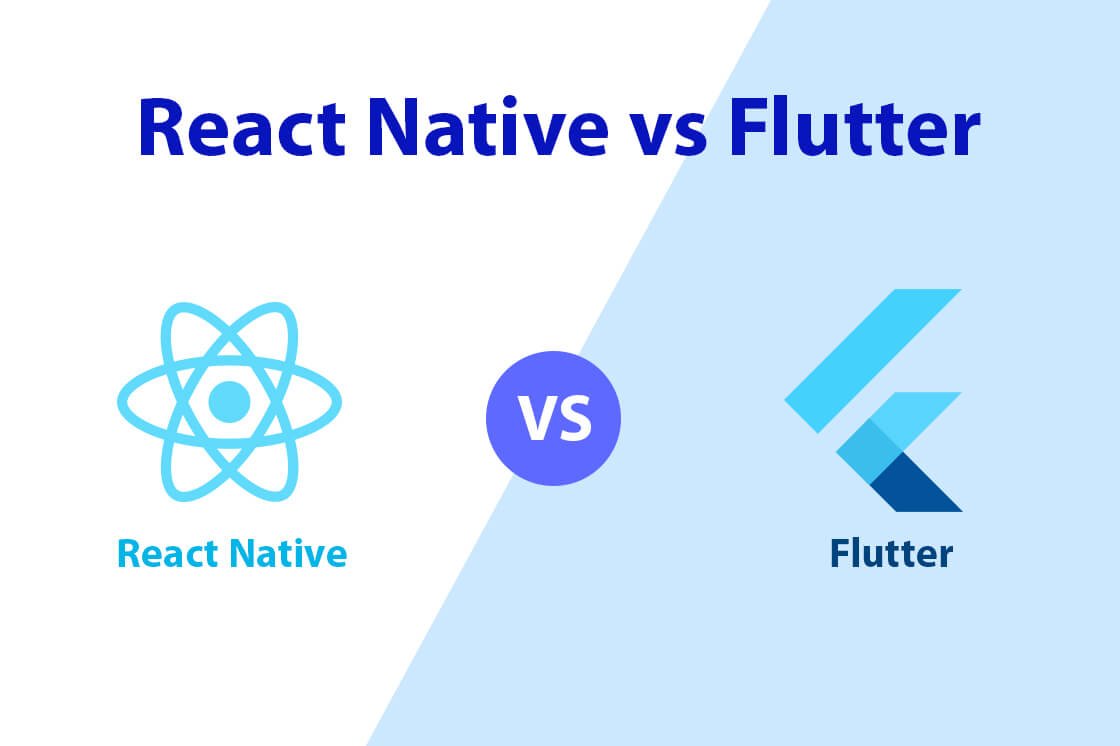The debate between React Native vs. Flutter is not new! When it comes to app development, developers tend to get confused about choosing between the two! The productivity and feature set of your future application are determined by the framework you choose. A poorly built app will, without a doubt, overheat the user’s device, lag, and malfunction.
This is the source of the long-running conflict between native and cross-platform development, as well as the conflict between the two most popular cross-platform development frameworks, Flutter and React Native. Before heading to the difference between Flutter and React Native, let’s discuss each!
What is React Native? – An Overview
React Native is a prominent JavaScript-based open-source framework. It primarily focuses on native application rendering, which is mainly compatible with Android and iOS. React Native is built using a combination of XML-like syntax and JavaScript (also known as JSX). It is backed by Facebook, which has more than 50 committed developers working on the framework right now.
Here are some interesting statistics about React Native’s market adoption:
- RN is expected to be used by 42% of developers for cross-platform application development by 2020.
- React Native is preferred by 11.5 percent of developers because of its native tools and libraries.
- React Native is loved by 58.5 percent of the developer community.
What are the Advantages of React Native Framework?
The widespread use of JavaScript brings a slew of advantages to React Native app development in general: faster recruiting, faster product release, lower project costs, easier maintenance, and so on. In addition, because of the extensive open-source codebase, it is possible to reuse one of the existing components in a project.
1. Native Components Specific to a Platform
When comparing the difference between Flutter and React Native, for example, you’ll see that the former recognizes the necessity of importing platform-specific native components, whilst the latter ignores them and instead relies on Ionic/Cordova utilities.
2. ReactXP and Web Libraries
If you want to launch a web version of a particular project, the React Native for Web and ReactXP libraries are useful additions to the framework.
3. Affluence
According to PYPL data, JavaScript is the third most popular programming language among developers. There is a large and readily available talent pool.
4. Performance Comparable to Natively-built Apps
It’s an interesting truth regarding React Native that’s also accurate. The benchmarks in this test (which is a basic app) show how RN is sometimes somewhat better than Swift for iOS!
5. Reloading (hot/live)
Hot/Live reload (essentially the same as Flutter’s comparable capability) saves developers a lot of time by allowing them to observe changes without having to rebuild the app.
What is Flutter? – An Overview
Flutter is an open-source framework that works with Google’s Dart programming language. It’s frequently referred to as an improved UI toolkit for creating cross-platform apps from a single codebase. It enables the creation of expressive and flexible user interfaces with native performance. A team of Google developers and the entire flutter community, support and contribute to it.
Here are some interesting statistics on Flutter’s market adoption:
- Flutter is used by 39% of the world’s population to create cross-platform mobile apps.
- Flutter is adored by 68.8% of the developing world’s population.
- Flutter was chosen by 7.2 percent of the community because of its libraries and tools.
Top 5 Advantages of Flutter App Development
1. Faster Development and Deployment
One of the significant differences between Flutter vs. React Native is that Flutter comes with built-in capabilities such as “hot reload” that help to speed up development and deployment. After small code changes, the latter compiles the code ahead of time and provides an app preview before rebuilding the project. As a result, faster development, along with the tool’s cross-platform capabilities, results in a quick time to market.
2. Good Documentation
Without any prior Flutter knowledge, the official Flutter. dev documentation is sufficient to get started constructing applications. When information or tools are missing, the community steps in to fill the void with bespoke articles and open git repositories for specific use cases.
3. Feature-rich User Interfaces
Flutter comes with various user interfaces that are entirely customizable down to the pixel level. The layered design allows for highly complex UI components to be created without losing rendering speed. Furthermore, each component can be animated.
4. Highly Compatible: On Android versions starting at 5.1.1 and iOS versions 8 and higher, compatibility with previous devices ensures proper rendering and functionality.
5. Flutter UI is Independent of Native UI
It enables error-free performance and a uniform experience on all supported platforms when native visual components lack functionality or fail to display completely.
Insight Timer, Stadia, Reflectly, and, of course, various Google services, like Google Ads, are among the greatest Flutter apps.
Flutter vs React Native: Which One to Choose?
Both frameworks serve the same purpose in software development and have similar general characteristics. Both are suitable for creating a mobile cross-platform MVP that can be re-used and extended with any of the free official or community-provided add-ons. When building for several platforms, both time to market and project costs are reduced.
Let’s understand the difference between Flutter and React Native in detail! How are they different, though?
1. Flutter vs. React Native Platform: Support
Flutter’s tools are aimed not only at web and mobile but also at desktop and embedded. It’s beneficial when an app is intended to be easily accessible from any device, including a phone, tablet, laptop, or the screen of a vehicle’s infotainment system.
2. React Native vs. Flutter: Performance
Flutter projects adhere to native code, resulting in improved overall performance; here is an excellent example of this. Nonetheless, it occasionally encounters performance challenges when a specific graphics function is not optimized.
3. Flutter vs. React Native: Ease of Use
React Native is easier to understand for former JavaScript developers (web front-end or backend, for example). It’s no surprise! Dart knowledge is required for Flutter.
4. Flutter vs. React Native: Project Size
Projects built with React Native are typically smaller. It may not appear to be a benefit presently, but consider small wearable devices: free space utilization must still be considered.
Flutter vs. React: Which One to Choose for Your App?
Both frameworks are still in their infancy and so cannot be considered mature or rock-stable at this time. As a result, unexpected performance decreases might happen at any time. Meanwhile, their primary developers and communities are actively working to improve both.
Final Thoughts
Flutter is a wonderful framework for developing several iterations and MVP apps, while React Native is a good framework for building basic native and cross-platform apps.
If you haven’t yet decided which is best for your project in the Flutter vs. React Native debate, chances are the answer is somewhere in the middle. Please contact us so that Eitbiz can assist you in selecting the most appropriate mobile app technology for your project. We’ve already helped many small and big companies throughout the world with similar issues.
To know more about React Native vs Flutter, simply visit https://www.eitbiz.com/ today!
Author
-

EitBiz is a fast-growing and dynamic software, mobile app and web design and development company, expanding to multiple countries.
View all posts






